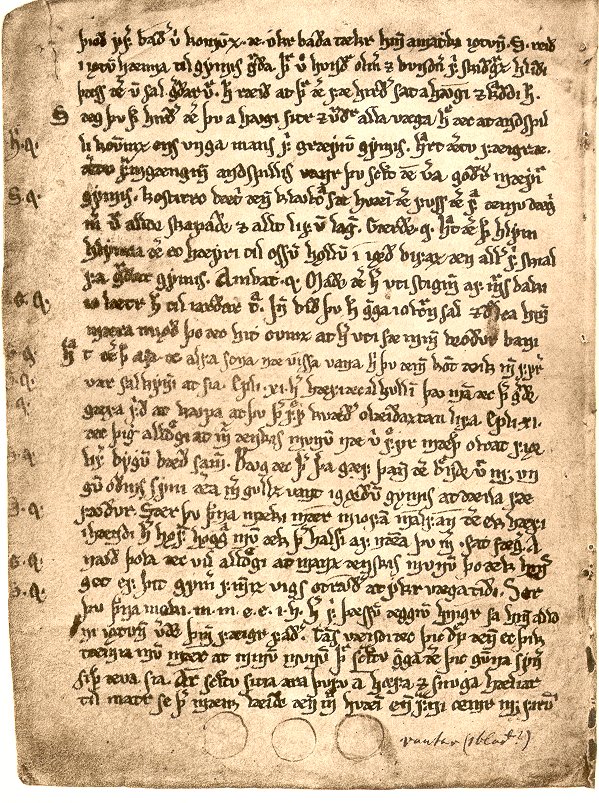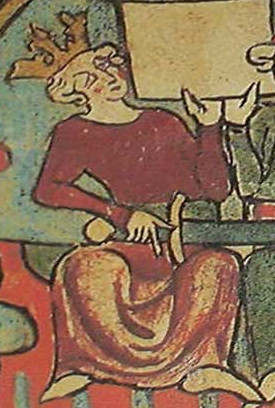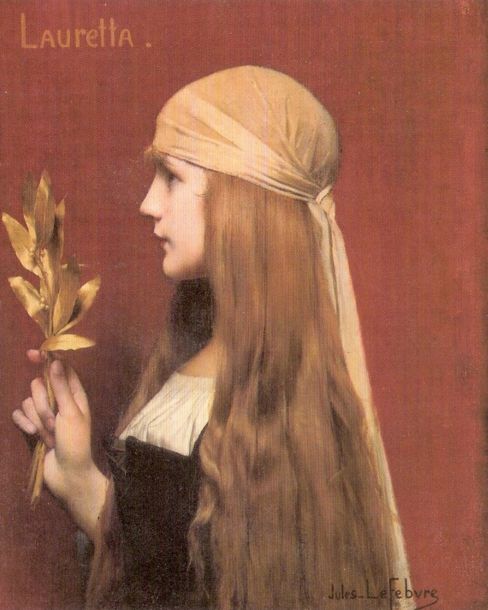|
Mágus Saga Jarls
''Mágus saga jarls'' is a medieval Icelandic romance saga. It survives in two main medieval redactions, a shorter one from about 1300 and a longer one from about 1350, both taking their inspiration from ''The Four Sons of Aymon'', a French ''chanson de geste''. It is distinctive enough, however, to be reckoned among the romances composed in Iceland, rather than a translation. Synopsis Kalinke and Mitchell summarise the saga thus: Earl Ámundi has four sons—Vigvarðr, Rögnvalldr, Markvarðr, Aðalvarðr—and a daughter. Rögnvalldr incurs the anger of the emperor by defeating him in a chess game. The emperor strikes Rögnvalldr, and Vigvarðr avenges the insult by killing the emperor. The saga revolves around the clash between the emperor's son Karl and the four brothers, abetted by their brother-in-law Mágus who is capable of assuming various disguises. In the end Mágus effects a reconciliation between the feuding parties. Manuscripts ''Mágus saga'' is exceptionally exte ... [...More Info...] [...Related Items...] OR: [Wikipedia] [Google] [Baidu] |
Medieval Icelandic Literature
Icelandic literature refers to literature written in Iceland or by Icelandic people. It is best known for the sagas written in medieval times, starting in the 13th century. As Icelandic and Old Norse are almost the same, and because Icelandic works constitute most of Old Norse literature, Old Norse literature is often wrongly considered a subset of Icelandic literature. However, works by Norwegians are present in the standard reader ''Sýnisbók íslenzkra bókmennta til miðrar átjándu aldar'', compiled by Sigurður Nordal on the grounds that the language was the same. Early Icelandic literature The medieval Icelandic literature is usually divided into three parts: *Eddic poetry *Sagas *Skaldic poetry The ''Eddas'' There has been some discussion on the probable etymology of the term "Edda". Most say it stems from the Old Norse term ''edda'', which means great-grandmother, but some see a reference to Oddi, a place where Snorri Sturluson (the writer of the ''Prose Edda'') was b ... [...More Info...] [...Related Items...] OR: [Wikipedia] [Google] [Baidu] |
Þiðreks Saga
''Þiðreks saga af Bern'' ('the saga of Þiðrekr of Bern', also ''Þiðrekssaga'', ''Þiðriks saga'', ''Niflunga saga'' or ''Vilkina saga'', with Anglicisations including ''Thidreksaga'') is an Old Norse chivalric saga centering the character it calls Þiðrekr af Bern, who originated as the historical king Theoderic the Great (454–526), but who attracted a great many unhistorical Germanic heroic legends. The text is probably by a Norwegian scholar from the 1200s who translated a lost Low German prose narrative of Theoderic's life, or who compiled it from various German sources, or by an Icelandic scholar from the 1300s. It is a pre-eminent source for a wide range of medieval Germanic legends. Titles The name ''Vilkinasaga'' was first used in Johan Peringskiöld's Swedish translation of 1715. Peringskiöld named it after ''Vilkinaland'', which the saga says was an old name for Sweden and Götaland. Origins The saga contains many narratives found in other medieval tales ab ... [...More Info...] [...Related Items...] OR: [Wikipedia] [Google] [Baidu] |
Chivalric Sagas
The ''riddarasögur'' (literally 'sagas of knights', also known in English as 'chivalric sagas', 'romance-sagas', 'knights' sagas', 'sagas of chivalry') are Norse prose sagas of the romance genre. Starting in the thirteenth century with Norse translations of French '' chansons de geste'' and Latin romances and histories, the genre expanded in Iceland to indigenous creations in a similar style. While the ''riddarasögur'' were widely read in Iceland for many centuries they have traditionally been regarded as popular literature inferior in artistic quality to the Icelanders' sagas and other indigenous genres. Receiving little attention from scholars of Old Norse literature, many remain untranslated. The production of chivalric sagas in Scandinavia was focused on Norway in the thirteenth century and then Iceland in the fourteenth. Vernacular Danish and Swedish romances came to prominence rather later and were generally in verse; the most famous of these are the Eufemiavisorna, them ... [...More Info...] [...Related Items...] OR: [Wikipedia] [Google] [Baidu] |
The Types Of The Scandinavian Medieval Ballad
''The Types of the Scandinavian Medieval Ballad: A Descriptive Catalogue'' (TSB) is the designation for a cataloguing system for Scandinavian ballads. It is also the title of the underlying reference book: ''The Types of the Scandinavian Medieval Ballad: A Descriptive Catalogue'', edited by Bengt R. Jonsson, Svale Solheim and Eva Danielson, in collaboration with Mortan Nolsøe and W. Edson Richmond, published in 1978 in two places: as volume 5 of the series Skrifter utgivna av svenskt visarkiv (Stockholm: Svenskt visarkiv), and as volume 59 of series B of Oslo's Instituttet for sammenkignende kulturforskning (The Institute for Comparative Research in Human Culture) (Oslo, Bergen, and Tromsø: Universitetsforlaget; ). It attempts to classify all specimens of traditional ballads known in one or more of the Scandinavian languages (Danish, Norwegian, Swedish, Icelandic, Faeroese, and the extinct Norn). Structure and scope Cognate ballads are assigned the same "TSB No." such as "A ... [...More Info...] [...Related Items...] OR: [Wikipedia] [Google] [Baidu] |
Norwegian Ballads
Norwegian, Norwayan, or Norsk may refer to: *Something of, from, or related to Norway, a country in northwestern Europe * Norwegians, both a nation and an ethnic group native to Norway * Demographics of Norway *The Norwegian language, including the two official written forms: ** Bokmål, literally "book language", used by 85–90% of the population of Norway ** Nynorsk, literally "New Norwegian", used by 10–15% of the population of Norway *The Norwegian Sea Norwegian or may also refer to: Norwegian * Norwegian Air Shuttle, an airline, trading as Norwegian **Norwegian Long Haul, a defunct subsidiary of Norwegian Air Shuttle, flying long-haul flights *Norwegian Air Lines, a former airline, merged with Scandinavian Airlines in 1951 *Norwegian coupling, used for narrow-gauge railways *Norwegian Cruise Line, a cruise line *Norwegian Elkhound, a canine breed. *Norwegian Forest cat, a domestic feline breed *Norwegian Red, a breed of dairy cattle *Norwegian Township, Schuylkill ... [...More Info...] [...Related Items...] OR: [Wikipedia] [Google] [Baidu] |
Faroese Ballad
Faroese ( ) or Faroish ( ) may refer to anything pertaining to the Faroe Islands, e.g.: *the Faroese language Faroese ( ; ''føroyskt mál'' ) is a North Germanic language spoken as a first language by about 72,000 Faroe Islanders, around 53,000 of whom reside on the Faroe Islands and 23,000 in other areas, mainly Denmark. It is one of five languages de ... * the Faroese people {{Disambiguation Language and nationality disambiguation pages ... [...More Info...] [...Related Items...] OR: [Wikipedia] [Google] [Baidu] |
Gesta Romanorum
''Gesta Romanorum'', meaning ''Deeds of the Romans'' (a very misleading title), is a Latin collection of anecdotes and tales that was probably compiled about the end of the 13th century or the beginning of the 14th. It still possesses a two-fold literary interest, first as one of the most popular books of the time, and secondly as the source, directly or indirectly, of later literature, in Geoffrey Chaucer, John Gower, Giovanni Boccaccio, Thomas Hoccleve, William Shakespeare, and others. Of its authorship nothing certain is known. It is conjecture to associate it either with the name of Helinand of Froidmont, Helinandus or with that of Pierre Bersuire, Petrus Berchorius (Pierre Bercheure). It is debated whether it originated in England, Germany or France. Content The work was evidently intended as a manual for preachers, and was probably written by one of the clerical profession. The name, ''Deeds of the Romans'', is only partially appropriate to the collection in its present form ... [...More Info...] [...Related Items...] OR: [Wikipedia] [Google] [Baidu] |
Snorra Edda
The ''Prose Edda'', also known as the ''Younger Edda'', ''Snorri's Edda'' ( is, Snorra Edda) or, historically, simply as ''Edda'', is an Old Norse textbook written in Iceland during the early 13th century. The work is often assumed to have been to some extent written, or at least compiled, by the Icelandic scholar, lawspeaker, and historian Snorri Sturluson 1220. It is considered the fullest and most detailed source for modern knowledge of Norse mythology, the body of myths of the North Germanic peoples, and draws from a wide variety of sources, including versions of poems that survive into today in a collection known as the ''Poetic Edda''. The ''Prose Edda'' consists of four sections: The Prologue, a euhemerized account of the Norse gods; ''Gylfaginning'', which provides a question and answer format that details aspects of Norse mythology (consisting of approximately 20,000 words), ''Skáldskaparmál'', which continues this format before providing lists of kennings and ''he ... [...More Info...] [...Related Items...] OR: [Wikipedia] [Google] [Baidu] |
Hálfs Saga Ok Hálfsrekka
''Hálfs saga ok Hálfsrekka'' (''The Saga of Half & His Heroes'') or ''Hálfssaga'' is a legendary saga composed in the early 14th century, based on a legend that has also been preserved in the Scandinavian medieval ballad '' Stolt Herr Alf''.Mitchell, Stephen A. (1991). ''Heroic Sagas and Ballads'', In the series ''Myth and Poetics''. Cornell University Press. . pp. 177, 183 It is about Halfr (Proto-Norse: ''Haþuwolafr'', meaning "battle-wulf") who was one of Norway's most famous legendary sea-kings. His champions had to submit to harsh rules. When Half had spent 18 years of free-booting, he returned to Hordaland, where Half's stepfather Asmund had ruled in his stead. Asmund invited Halfr and half of his warband to a banquet and swore Halfr his loyalty. However, Asmund put them to the sword or burnt them to death inside his hall. Only two warriors survived and managed to escape, Utsten and Hrok the Black. Utsten and Hrok united with Sölve of Njardey and they avenged Half and ... [...More Info...] [...Related Items...] OR: [Wikipedia] [Google] [Baidu] |
Karlamagnús Saga
The ''Karlamagnús saga'', ''Karlamagnussaga'' or ''Karlamagnus-saga'' (" saga of Charlemagne") was a late-thirteenth-century Norse prose compilation and adaptation, made for Haakon V of Norway, of the Old French '' chansons de geste'' of the Matter of France dealing with Charlemagne and his paladins. In some cases, the ''Karlamagnús saga'' remains the only source for otherwise-lost Old French epics. The ten branches The vast work is divided into 10 chapters, or "branches," as follows: *I. "Karlamagnus" (''Upphaf Karlamagnús'') *:Or "Charlemagne’s Early Life," a digested account of Charlemagne and his knights. Includes a version of the tale of the thief '' Basin'', which has not survived in French. *II. "Lady Olif and Landres her Son" (''Af frú Ólif og Landrés syni hennar'') *:Based on an English version (of the lost ''Dame Olive et Landri''), according to the author; it is an adaptation of the French chanson de geste ''Doon de la Roche'' a work also known in medieval Sp ... [...More Info...] [...Related Items...] OR: [Wikipedia] [Google] [Baidu] |
Decameron
''The Decameron'' (; it, label=Italian, Decameron or ''Decamerone'' ), subtitled ''Prince Galehaut'' (Old it, Prencipe Galeotto, links=no ) and sometimes nicknamed ''l'Umana commedia'' ("the Human comedy", as it was Boccaccio that dubbed Dante Alighieri's ''Comedy'' "''Divine''"), is a collection of short stories by the 14th-century Italian author Giovanni Boccaccio (1313–1375). The book is structured as a frame story containing 100 tales told by a group of seven young women and three young men; they shelter in a secluded villa just outside Florence in order to escape the Black Death, which was afflicting the city. Boccaccio probably conceived of the ''Decameron'' after the epidemic of 1348, and completed it by 1353. The various tales of love in ''The Decameron'' range from the erotic to the tragic. Tales of wit, practical jokes, and life lessons contribute to the mosaic. In addition to its literary value and widespread influence (for example on Chaucer's ''Canterbury Ta ... [...More Info...] [...Related Items...] OR: [Wikipedia] [Google] [Baidu] |
Romance Saga
The ''riddarasögur'' (literally 'sagas of knights', also known in English as 'chivalric sagas', 'romance-sagas', 'knights' sagas', 'sagas of chivalry') are Norse prose sagas of the romance genre. Starting in the thirteenth century with Norse translations of French '' chansons de geste'' and Latin romances and histories, the genre expanded in Iceland to indigenous creations in a similar style. While the ''riddarasögur'' were widely read in Iceland for many centuries they have traditionally been regarded as popular literature inferior in artistic quality to the Icelanders' sagas and other indigenous genres. Receiving little attention from scholars of Old Norse literature, many remain untranslated. The production of chivalric sagas in Scandinavia was focused on Norway in the thirteenth century and then Iceland in the fourteenth. Vernacular Danish and Swedish romances came to prominence rather later and were generally in verse; the most famous of these are the Eufemiavisorna, the ... [...More Info...] [...Related Items...] OR: [Wikipedia] [Google] [Baidu] |





